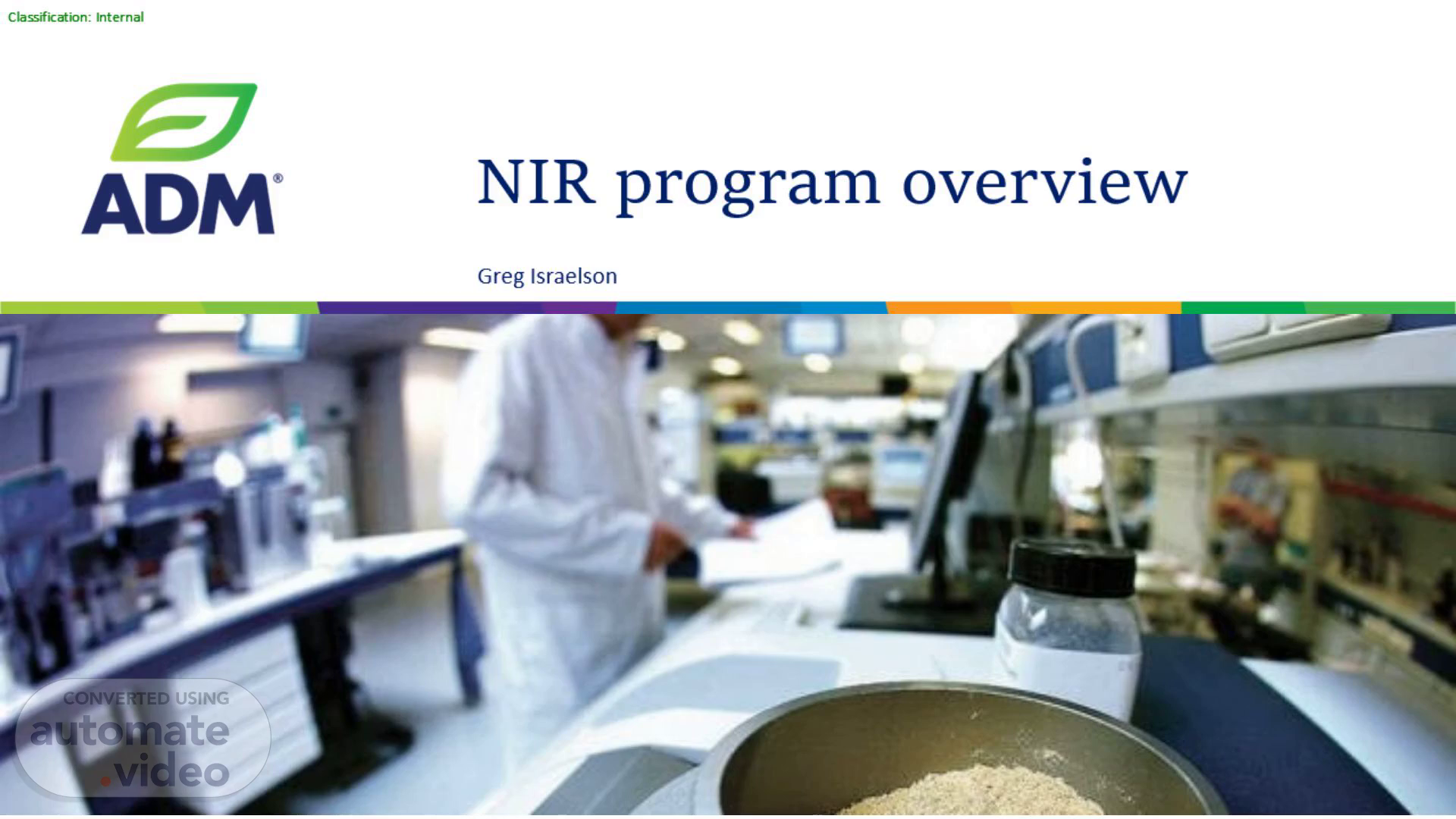Scene 1 (0s)
[Audio] Welcome to the ADM NIR program overview. This will provide information about the NIR structure and program support..
Scene 2 (9s)
[Audio] The analytical need for NIR instruments revolve around the rapid analysis that are easy to use by any level technician. There is a lot of work that goes on behind the scenes, but when properly utilized can provide reliable, consistent values for production and quality..
Scene 3 (33s)
[Audio] In July 2024, a new central NIR laboratory was opened in Decatur. This provides reference values for model development and monitoring of factory instruments..
Scene 4 (59s)
[Audio] The lab currently follows AOCS methods for these parameters..
Scene 5 (1m 15s)
[Audio] Throughout ADM factories you will see some of these instruments being utilized. These are a mix of grating based, FT NIR, and diode array. Each vendor provides benchtop solutions as well as inline units..
Scene 6 (1m 29s)
[Audio] How does the NIR work. It shines a light into the sample. Some of the light is absorbed and some is reflected. Sensitive sensors measure this reaction at different wavelengths. The results are put into a graph and a spectra of the sample is produced. This is called the "fingerprint" of the sample. Analytes such a protein, moisture, fat & fiber all absorb light at different frequencies. Prediction models are built on this information..
Scene 7 (2m 1s)
[Audio] To create models for multiple factories we have each factory submit samples into our central lab. This gives us regional variations in the samples. The goal is to provide a robust model that captures the variation throughout the country. A list of common difference that we observe is listed above..
Scene 8 (2m 19s)
[Audio] Once we receive samples from each site the reference chemistry is performed. The data is combined with the spectra from the scanned samples. We use a chemometric software package to develop the prediction model. The software provides graphs and statistics to show us the errors and how it should perform..
Scene 9 (2m 53s)
[Audio] After a model is deployed we switch to a monitoring program. The goal of monitoring is to make sure the prediction model and the reference chemistry stays linear. Slight differences in the sample or on the reference side can cause biases in the predictions..
Scene 10 (3m 13s)
[Audio] By monitoring against the reference lab on a regular basis ADM's NIR specialist ensure that the predictions are in line with the reference values..
Scene 11 (3m 32s)
[Audio] The monitoring statistics are kept in spreadsheets for evaluation. Changes are made when the bias is large enough to make an impact on the overall error..
Scene 12 (4m 33s)
[Audio] Most NIR instruments are connected to a centralized network software. The NIR specialists can input model or bias adjustments into the software for synchronization. All products, samples, bias adjustments and diagnostics reside in the software..
Scene 13 (5m 38s)
[Audio] To minimize error it is critical for good sample integrity practices. Collecting, scanning, storing, numbering and shipping all can impact the sample..
Scene 14 (6m 0s)
[Audio] There are also instrument integrity concerns. Make sure it is in a low vibration, temp steady location. Keep it clean and have critical spare parts on hand. Routinely inspect sample cups, optical window and instrument case..
Scene 15 (6m 32s)
[Audio] The NIR Technology Center Lab has a team room loaded with helpful documents, trainings, and support needs. Please visit and make use of the material..
Scene 16 (7m 0s)
[Audio] Thank you for listening to our presentation. If you have questions or comments please sent them to the email listed..
